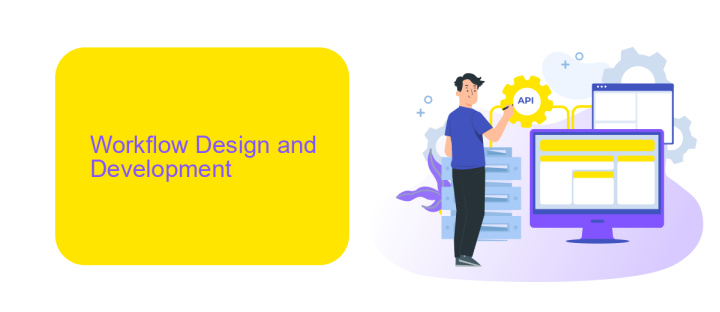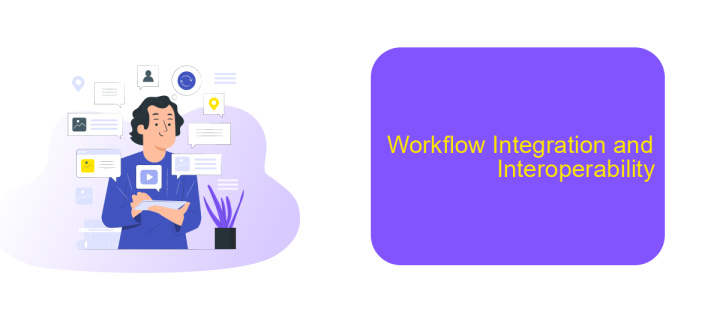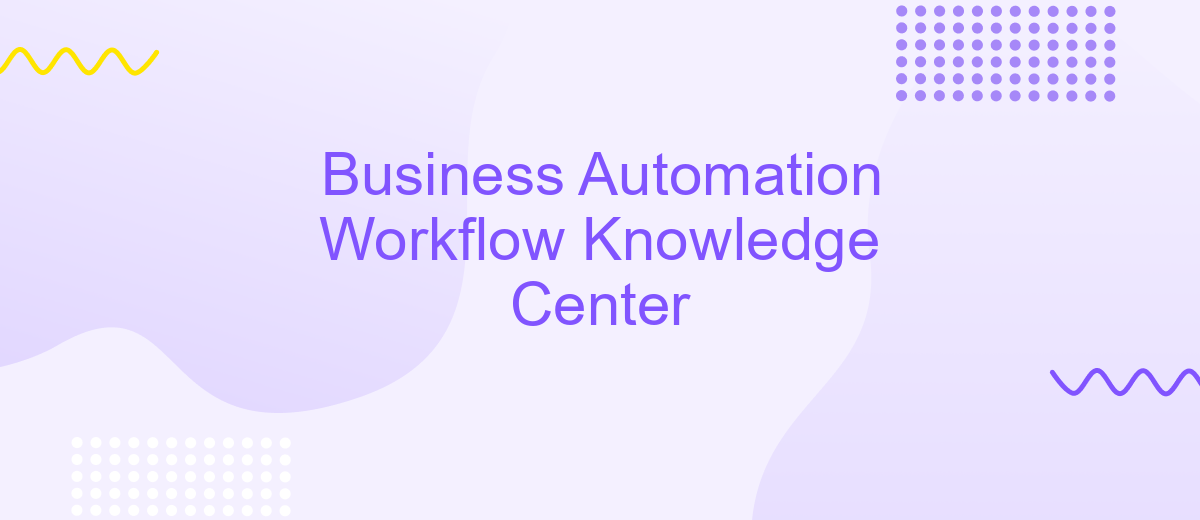Business Automation Workflow Knowledge Center
Welcome to the Business Automation Workflow Knowledge Center, your go-to resource for mastering workflow automation. Here, you'll find comprehensive guides, best practices, and expert insights to streamline your business processes. Whether you're a beginner or an experienced professional, our knowledge base is designed to help you achieve efficiency and excellence in your workflow management.
Workflow Automation Concepts
Workflow automation is a crucial aspect of modern business operations, streamlining processes and enhancing efficiency. By automating repetitive tasks, organizations can save time, reduce errors, and improve overall productivity.
- Task Automation: Automate routine tasks such as data entry, notifications, and approvals.
- Integration: Seamlessly connect different systems and applications to ensure smooth data flow.
- Monitoring: Track and monitor workflows in real-time to identify bottlenecks and optimize processes.
- Scalability: Easily scale automated workflows as your business grows.
Tools like ApiX-Drive facilitate workflow automation by enabling easy integration of various applications and services. With ApiX-Drive, businesses can connect their CRM, email marketing, and other tools without any coding knowledge, ensuring a cohesive and efficient workflow. By leveraging these concepts and tools, organizations can achieve significant improvements in their operational efficiency and overall performance.
Workflow Design and Development

Designing and developing workflows in Business Automation Workflow involves creating a seamless process that integrates various business operations. It requires a comprehensive understanding of the business requirements, identifying key tasks, and defining the sequence in which these tasks should be executed. Effective workflow design ensures that tasks are automated, reducing manual intervention and minimizing errors. Utilizing tools like Business Process Model and Notation (BPMN) can aid in visualizing and mapping out the workflow, making it easier to identify potential bottlenecks and areas for improvement.
Integration plays a crucial role in workflow development, allowing different systems and applications to communicate effectively. Services like ApiX-Drive can facilitate this integration by connecting various platforms and automating data transfer between them. This ensures that information flows smoothly across different stages of the workflow, enhancing efficiency and productivity. By leveraging such integration services, businesses can streamline their processes, reduce operational costs, and improve overall performance.
Workflow Management and Monitoring

Effective workflow management and monitoring are crucial for ensuring that business processes run smoothly and efficiently. By leveraging advanced tools and techniques, organizations can streamline their workflows, reduce bottlenecks, and enhance overall productivity. Monitoring these processes in real-time allows for immediate identification and resolution of issues, ensuring that operations remain uninterrupted.
1. Define clear workflow processes and document each step.
2. Utilize automation tools like ApiX-Drive to integrate various services and streamline operations.
3. Implement real-time monitoring systems to track workflow progress and identify potential issues.
4. Regularly review and update workflows to ensure they remain efficient and relevant.
5. Train staff on new tools and processes to ensure smooth adoption and usage.
By integrating tools such as ApiX-Drive, businesses can automate data transfers between different platforms, eliminating manual entry and reducing errors. This not only saves time but also ensures data consistency across systems. Regular monitoring and updates to workflows ensure that the processes evolve with the business needs, maintaining efficiency and effectiveness over time.
Workflow Integration and Interoperability

Workflow integration and interoperability are crucial for the seamless operation of business processes. By integrating various systems and applications, organizations can ensure that information flows smoothly across different departments and functions, enhancing overall efficiency.
One effective way to achieve this integration is by using services like ApiX-Drive. ApiX-Drive allows businesses to connect multiple applications and automate workflows without the need for extensive coding knowledge. This platform supports a wide range of applications, making it easier to synchronize data and processes.
- Automate data transfer between CRM and email marketing tools
- Synchronize information between project management software and communication platforms
- Integrate e-commerce platforms with inventory management systems
By leveraging such integration services, businesses can reduce manual effort, minimize errors, and ensure that all systems are up-to-date with the latest information. This not only saves time but also enhances the accuracy and reliability of business operations.
Best Practices and Case Studies
Implementing Business Automation Workflow (BAW) effectively requires a strategic approach to ensure optimal performance and value. One best practice is to start with a clear understanding of your business processes and identify areas where automation can bring the most benefit. Regularly review and refine these processes for continuous improvement. Leveraging tools like ApiX-Drive can significantly enhance your workflow by simplifying the integration of various applications and services, ensuring seamless data flow and reducing manual intervention.
Case studies have shown that organizations adopting BAW have achieved remarkable improvements in efficiency and accuracy. For instance, a financial services company streamlined its loan approval process, reducing the time required from days to hours. Another example is a healthcare provider that automated patient data management, leading to better patient outcomes and reduced administrative workload. These successes highlight the transformative potential of BAW when combined with robust integration tools like ApiX-Drive, which facilitate smooth and efficient automation across diverse systems.
- Automate the work of an online store or landing
- Empower through integration
- Don't spend money on programmers and integrators
- Save time by automating routine tasks
FAQ
What is Business Automation Workflow (BAW)?
How can BAW improve my business operations?
What types of processes can be automated with BAW?
How do I integrate BAW with other systems?
What are the key benefits of using BAW?
Time is the most valuable resource in today's business realities. By eliminating the routine from work processes, you will get more opportunities to implement the most daring plans and ideas. Choose – you can continue to waste time, money and nerves on inefficient solutions, or you can use ApiX-Drive, automating work processes and achieving results with minimal investment of money, effort and human resources.


